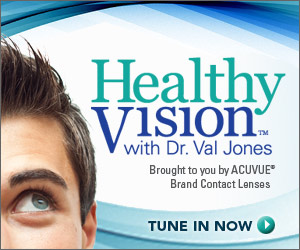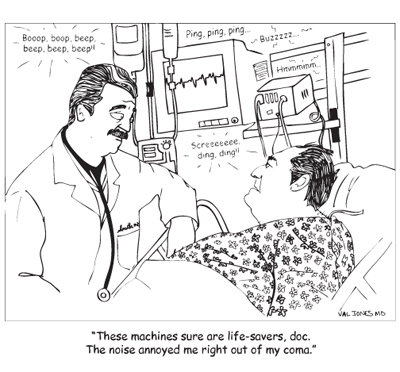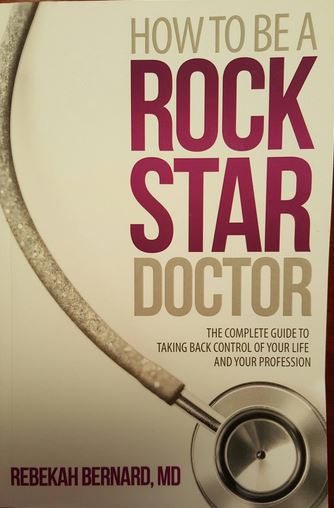December 13th, 2010 by EvanFalchukJD in Better Health Network, Health Policy, Medblogger Shout Outs, Opinion
Tags: Best Doctors, Cutting Healthcare Costs, Employee Health, Employee Healthcare Benefits, Employer Healthcare Contributions, Employer-Provided Health Coverage, Evan Falchuk, Healthcare Quality, Healthcare reform, Healthier Employees, Medical Blog Carnivals, Medical Blogosphere
No Comments »


Welcome to The Benefits Package — the very first employee benefits blog carnival. After healthcare reform, employee benefits move to center stage as one of the most important issues facing Americans.
So what are employers, insurers, and the government really doing to rein in healthcare costs, get their employees to live healthier lives, and improve healthcare quality?
The Benefits Package is the first-ever blog carnival dedicated to these issues. With benefits executives starting to make the leap into the blogosphere, The Benefits Package will highlight the best insights and opinions on this important subject. You will discover new blogs, learn new things, and hopefully think about issues a little differently. I’ll host the first couple of Benefits Packages, and then others will take their turn.
Below you’ll find a terrific set of posts by some true thought leaders. If you like what you see, please submit a post of your own next time. Enjoy the first Benefits Package!
—–
At the Health Business Blog, David Williams explains why mini-med plans aren’t as bad as some people would have you believe.
At Hank Stern’s Insure Blog, Mike Feehan explains how the federal government makes private coverage more expensive in a way that makes its own coverage cheaper.
Jen Benz of the Benz Communications Blog explains that companies who fail to put their benefits information online are making a big mistake. Read more »
*This blog post was originally published at See First Blog*
December 13th, 2010 by BobDoherty in Better Health Network, Health Policy, News, Opinion
Tags: ACP Advocate, Allocated Medical Care, American College Of Physicians, Arizona, Bob Doherty, Death By Budget Cuts, Death Panels, Denied Coverage, Denied Treatment, Fear Mongering, General Medicine, Government-run Healthcare, Healthcare Rationing, Healthcare reform, JAMA, Journal of the American Medical Association, Managed Care, Marc Lacey, medicaid, New York Times, Organ Transplants, Patient Protection and Affordable Care Act, PPACA, Private Sector Health Insurers, Rationed Care, Transplantation
1 Comment »

One of the canards slung at the Affordable Care Act is that it creates “death panels” that would allow the government to deny patients lifesaving treatments, even though two independent and non-partisan fact-checking organizations found it would do no such thing.
I don’t bring this up now to rehash the debate, but because the New York Times had a recent story on Arizona’s decision to deny certain transplants to Medicaid enrollees — “death by budget cuts” in the words of reporter Marc Lacey. His story profiles several patients who died when they were unable to raise money on their own to fund a transplant. Lacey quotes a physician expert on transplants who flatly states: “There’s no doubt that people aren’t going to make it because of this decision.”
Arizona Medicaid officials told the Times that they “recommended discontinuing some transplants only after assessing the success rates for previous patients. Among the discontinued procedures are lung transplants, liver transplants for hepatitis C patients and some bone marrow and pancreas transplants, which altogether would save the state about $4.5 million a year.” Read more »
*This blog post was originally published at The ACP Advocate Blog by Bob Doherty*
December 13th, 2010 by PJSkerrett in Better Health Network, Health Tips, News, Research
Tags: AF, AHA, American Heart Association, Americans and Stroke Death, Aspirin, Atrial Fibrillation, Blood Flow to the Brain, Brain Attack Prevention, Cardiovascular Health, CDC, Centers For Disease Control and Prevention, Diabetes, Diet and Exercise, Harvard Health Blog, Harvard Heart Letter, Harvard Medical School, Harvard University, Havard Health Publications, Heart Health, High Blood Pressure, High Cholesterol, Hypertension, Irregular Heartbeat, Leading Causes of Death in the U.S., PJ Skerrett, Preventive Health, Preventive Medicine, Sickle Cell Disease, smoking, Stroke Deaths, Stroke Risk, Warfarin
No Comments »

 Stroke killed 2,000 fewer Americans in 2008 (the last year with complete numbers) than it did in 2007, the Centers for Disease Control and Prevention (CDC) said yesterday in its latest annual Deaths report. That dropped stroke from the third leading cause of death in the United States to the fourth.
Stroke killed 2,000 fewer Americans in 2008 (the last year with complete numbers) than it did in 2007, the Centers for Disease Control and Prevention (CDC) said yesterday in its latest annual Deaths report. That dropped stroke from the third leading cause of death in the United States to the fourth.
Good news? Yes and no. It’s always good news when fewer people die. The reduction suggests a payoff for efforts to prevent stroke and improve the way doctors treat it.
Yet the drop from third to fourth place is due largely to an accounting change. The CDC reorganized another category, “chronic lower respiratory diseases” (mainly chronic bronchitis and emphysema), to include complications of these diseases such as pneumonia. The change substantially increased the number of deaths in this category, which had long trailed stroke as the fourth leading cause of death.
More worrisome is that the decline in deaths from stroke isn’t matched by a decline in the number of strokes. On the rise since 1988, stroke now strikes almost 800,000 Americans a year, and that is expected to grow. Read more »
*This blog post was originally published at Harvard Health Blog*
December 12th, 2010 by John Mandrola, M.D. in Better Health Network, Opinion, True Stories
Tags: AV Node, Cardiac Arrhythmia, Cardiac Electrophysiology, Cardiac Output, Cardiology, Cubicle Doctors, December, Deductible Health Plans, Depression, Dr. John Mandrola, Electrophysiology Lab, Heart Rhythm, Holidays, Human Heart, Insurance Companies, Pacemakers, SAD, Seasonal Affective Disorder
No Comments »

 The human heart resides in a lighltless 98.6-degree chest cavity. Its contracting muscles are further cushioned by the well-lubricated glistening smooth pericardial sac. One wouldn’t think that the heart could sense the time of year. The heart’s rhythm should remain independent of the holiday season. But then there is December in the EP lab. They are as busy as the malls.
The human heart resides in a lighltless 98.6-degree chest cavity. Its contracting muscles are further cushioned by the well-lubricated glistening smooth pericardial sac. One wouldn’t think that the heart could sense the time of year. The heart’s rhythm should remain independent of the holiday season. But then there is December in the EP lab. They are as busy as the malls.
Is it the depressing weather? Or the short days? Or a post-Thanksgiving hangover? It’s hard to say, but every year for as many as I can remember, the EP lab rocks in November and December. And with the advent of deductible health plans, this holiday phenomenon has only intensified.
The I-90 of the heart, the AV node, seems to give out more in the holidays. I’ll never forget the Saturday in December many years ago when I did five “urgent” pacemakers — and neither will the pacemaker rep. Read more »
*This blog post was originally published at Dr John M*
December 12th, 2010 by Toni Brayer, M.D. in Better Health Network, Health Policy, News, Opinion
Tags: Access To Healthcare Services, Dr. Toni Brayer, Everything Health, Health-Status Indicators, Healthcare Policy, Healthcare reform, National Report Card, New U.S. Healthcare System, Oregon Health and Science University, Patient Protection and Affordable Care Act, PPACA, U.S. Department of Health and Human Services, Unsatisfactory Healthcare, Women For Women International, Women's Health in the U.S.
1 Comment »

 The Oregon Health and Science University has published its fifth report card since 2000. It grades and ranks the United States on 26 health-status indicators for women. In 2010, not one state received an overall “satisfactory” grade for women’s health, and just two states — Vermont and Massachusetts — received a “satisfactory-minus” grade. Overall, the nation is so far from meeting the goals set by the U.S. Department of Health and Human Services that it receives an overall grade of “unsatisfactory.”
The Oregon Health and Science University has published its fifth report card since 2000. It grades and ranks the United States on 26 health-status indicators for women. In 2010, not one state received an overall “satisfactory” grade for women’s health, and just two states — Vermont and Massachusetts — received a “satisfactory-minus” grade. Overall, the nation is so far from meeting the goals set by the U.S. Department of Health and Human Services that it receives an overall grade of “unsatisfactory.”
The national report card uses status indicators to assess women’s health:
Women’s access to healthcare services (medically under-served area, no abortion provider, no health insurance and first trimester prenatal care)
Wellness (screening mammograms, colorectal cancer, pap smears, cholesterol)
Prevention (leisure time physical activity, obesity, eating five fruits and veggies/day, binge drinking, annual dental visits, smoking)
Key conditions (coronary heart disease death rate, lung cancer death, stroke death, breast cancer death)
Chronic conditions (high blood pressure, diabetes, AIDS, arthritis, osteoporosis)
Reproductive health (chlamydia, maternal mortality, unintended pregnancies)
Mental health
Violence against women
Infant mortality rate
Life expectancy
Poverty
High school completion
Wage gap
The score on these varied status indicators fluctuated depending upon which state a woman lives. California and New Jersey ranked highest on state health policies, while Idaho and South Dakota ranked last on policies. Read more »
*This blog post was originally published at EverythingHealth*






 Stroke killed 2,000 fewer Americans in 2008 (the last year with complete numbers) than it did in 2007, the Centers for Disease Control and Prevention (CDC) said yesterday in its latest annual
Stroke killed 2,000 fewer Americans in 2008 (the last year with complete numbers) than it did in 2007, the Centers for Disease Control and Prevention (CDC) said yesterday in its latest annual 











